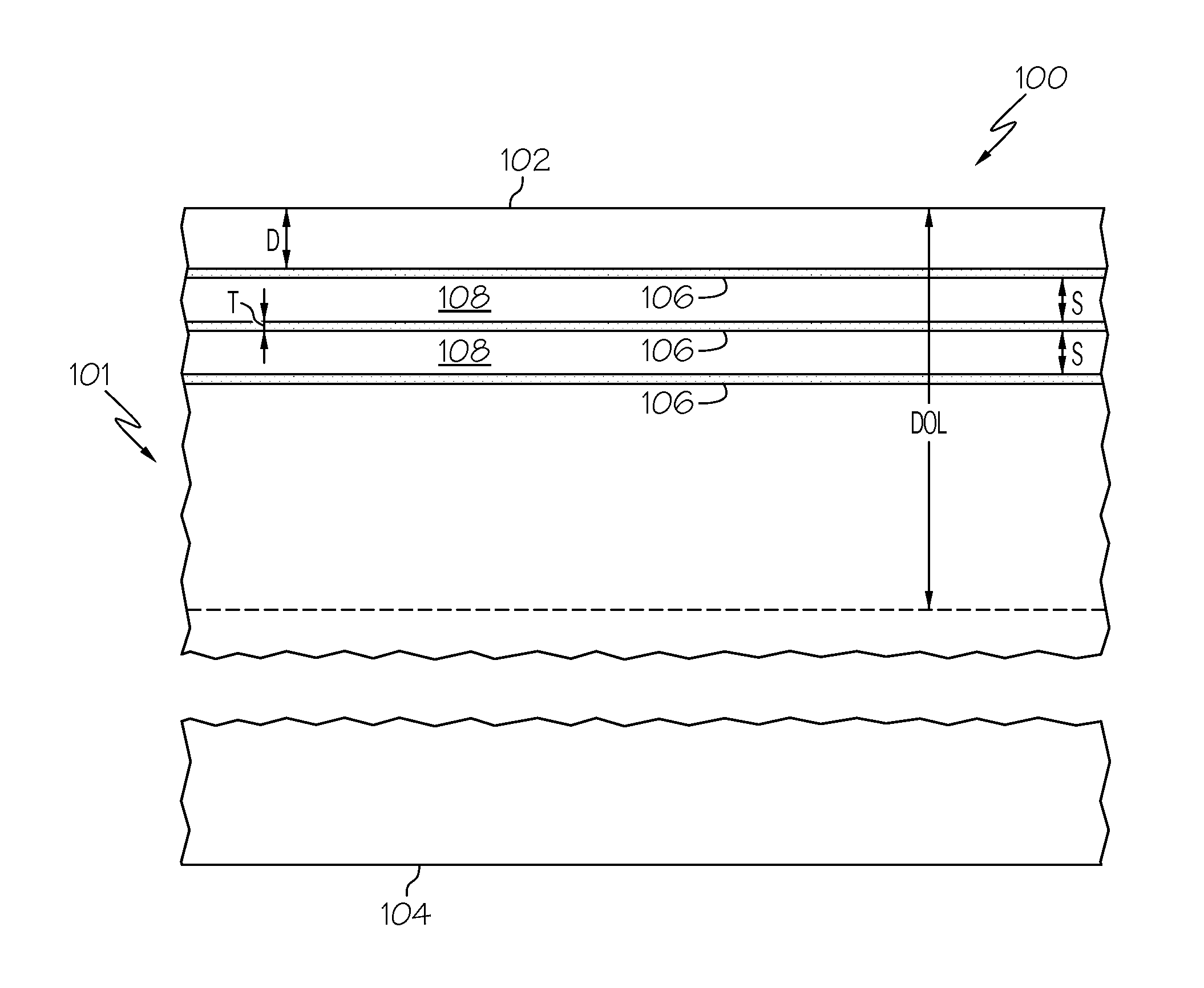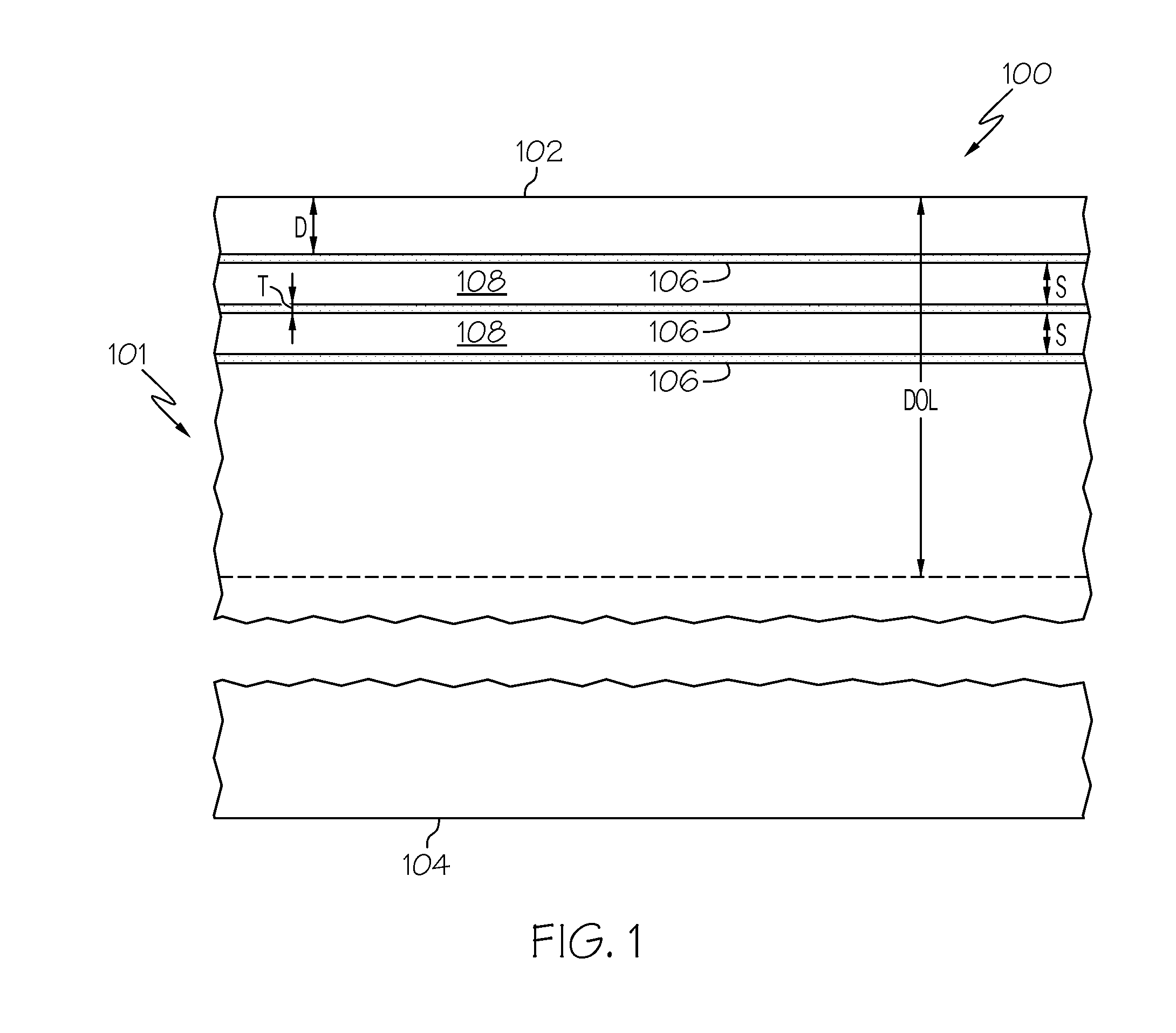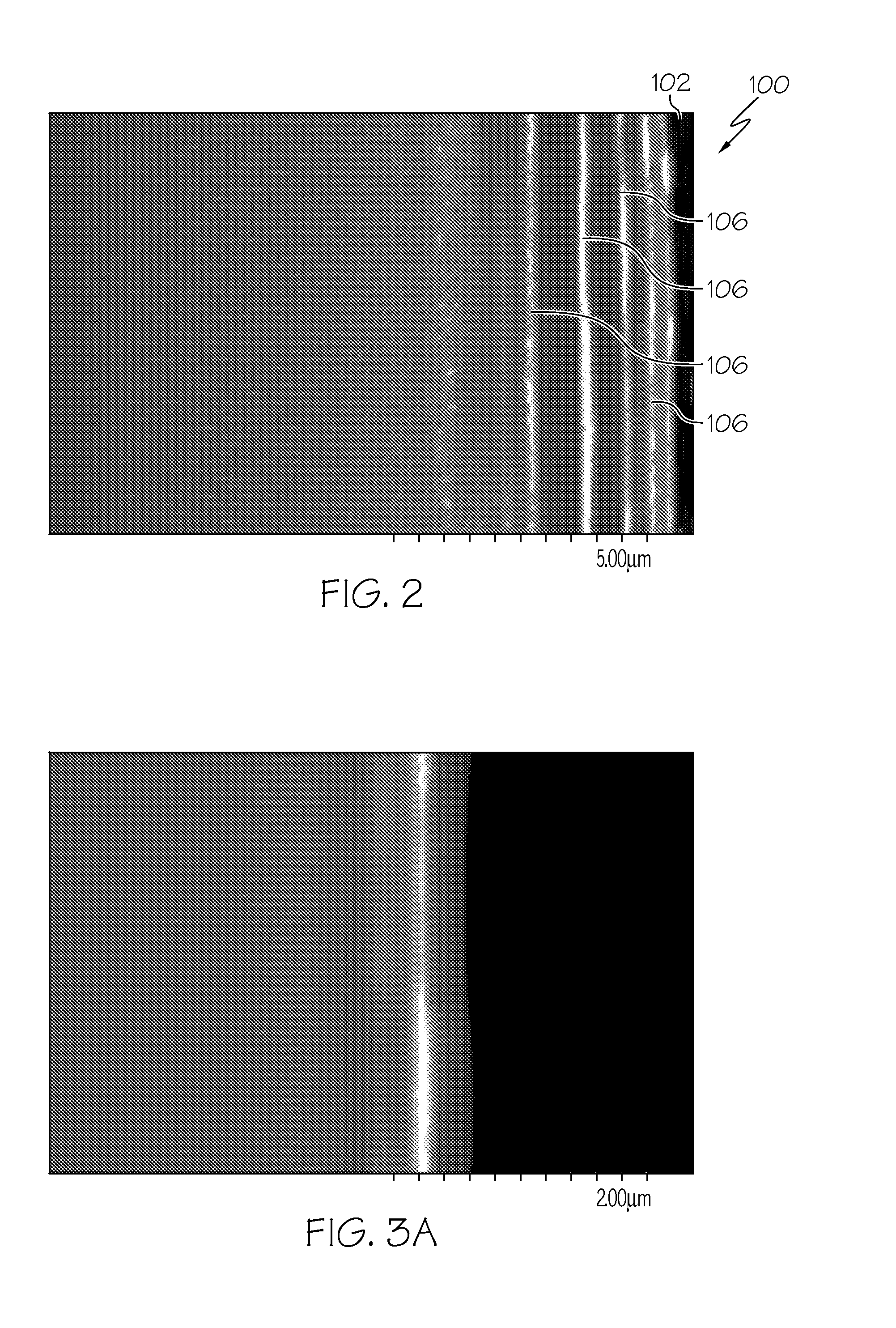Glass articles with infrared reflectivity and methods for making the same
a technology of infrared reflectivity and glass articles, which is applied in the field of glass articles, can solve the problems of reducing the overall energy efficiency of the vehicle, coatings are subject to physical contact damage and/or degradation,
- Summary
- Abstract
- Description
- Claims
- Application Information
AI Technical Summary
Benefits of technology
Problems solved by technology
Method used
Image
Examples
example 1
[0054]Four glass plates (Samples A, B, C and D) formed from Corning glass code 2317 ion-exchangeable, alkali-aluminosilicate glass commercially available from Corning Incorporated were ion exchanged in a molten salt bath comprising 5 wt. % AgNO3 and 95 wt. % NaNO3 for 5 minutes at a temperature of 410° C. to introduce silver ions into the samples. None of the samples were ion exchanged prior to emersion in the AgNO3 / NaNO3 bath. Thereafter, the samples were treated in flowing hydrogen gas at a temperature of 400° C. to facilitate the formation of a plurality of discrete layers of metallic silver in each sample. Sample A was treated for 10 minutes; Sample B was treated for 15 minutes; Sample C was treated for 25 minutes; and Sample D was treated for 60 minutes. An SEM image of a cross section of each sample was then captured with a scanning electron microscope to document the development of the discrete layers of metallic silver as a function of the hydrogen treatment time.
[0055]FIGS....
example 2
[0056]Three glass plates (Samples AA, BB, CC) were ion exchanged in a molten salt bath comprising 5 wt. % AgNO3 and 95 wt. % NaNO3 to introduce silver ions into the glass plate. The temperature of the bath was 410° C. Sample AA was formed from Gorilla® Glass, an alkali-aluminosilicate glass commercially available from Corning Incorporated. Samples BB and CC were formed from Corning glass code 2317. None of the samples were ion exchanged prior to emersion in the AgNO3 / NaNO3 bath. Each sample was ion exchanged in the AgNO3 / NaNO3 bath for 5 minutes. Thereafter, the samples were treated in flowing hydrogen gas at a temperature of 400° C. to facilitate the formation of a plurality of discrete layers of metallic silver in each sample. Sample AA was subjected to the hydrogen gas treatment for 5 hours. Samples BB and CC were subjected to the hydrogen gas treatment for 10 minutes and 15 minutes, respectively.
[0057]Thereafter, the reflectance of each sample was measured for different waveleng...
example 3
[0058]Two glass plates (Samples AAA, BBB) formed from Corning glass code 2317 were ion exchanged in a molten salt bath comprising 5 wt. % AgNO3 and 95 wt. % NaNO3 for 5 minutes to introduce silver ions into each sample. The temperature of the bath was 410° C. None of the samples were ion exchanged prior to emersion in the AgNO3 / NaNO3 bath. Thereafter, the samples were treated in flowing hydrogen gas at a temperature of 400° C. to facilitate the formation of a plurality of discrete layers of metallic silver in each sample. Samples AAA and BBB were then subjected to the hydrogen gas treatment for 10 minutes and 15 minutes, respectively.
[0059]Thereafter, the transmittance of each sample was measured for different wavelengths of electromagnetic radiation incident on each sample. FIG. 5 graphically depicts the transmittance (%) on the y-axis as a function of the wavelength of electromagnetic radiation incident on each sample (x-axis). As shown in FIG. 5, the transmittance of each sample ...
PUM
| Property | Measurement | Unit |
|---|---|---|
| Temperature | aaaaa | aaaaa |
| Temperature | aaaaa | aaaaa |
| Temperature | aaaaa | aaaaa |
Abstract
Description
Claims
Application Information
 Login to View More
Login to View More - R&D
- Intellectual Property
- Life Sciences
- Materials
- Tech Scout
- Unparalleled Data Quality
- Higher Quality Content
- 60% Fewer Hallucinations
Browse by: Latest US Patents, China's latest patents, Technical Efficacy Thesaurus, Application Domain, Technology Topic, Popular Technical Reports.
© 2025 PatSnap. All rights reserved.Legal|Privacy policy|Modern Slavery Act Transparency Statement|Sitemap|About US| Contact US: help@patsnap.com



